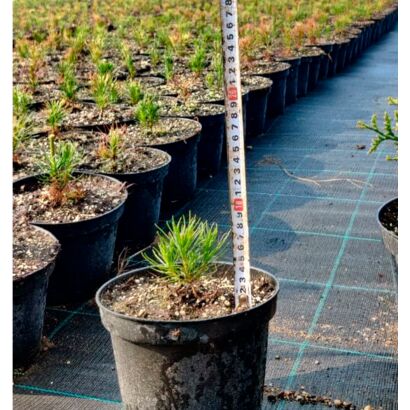mountain pine
Crown: rounded, creeping
Needles: dark green, dense
Frost resistance: medium
Zoning: temperate continental climate
Origin: Europe
Mountain pine or European dwarf pine (Pinus mugo) — coniferous tree of the Pine family (Pinaceae), grows in the subalpine and alpine zone of Central and Southern Europe. Due to its compact size and unusual crown shape, the view is popular with landscape designers.
Dignity of the variety: appearance, compact size
Treeshort – up to 8 m in height with a spherical or creeping crown shape. There is single-barrel and multi-barrel. Trunk – grey-brown, smooth. Bark – grey, scaly. Branches – dark brown, closely spaced. Root – rod with spreading processes.
Needles fragrant, dense, dark green. Needles – curved 4-5 cm long and 1.5-2 mm thick, collected in bundles.
Conesgray-brown, numerous, growing singly or in clusters of 2-3 pieces. Pine fruiting begins after 5 years. The seeds are small, dark.
Destination. European dwarf pine is widely used in landscape design to cover slopes, slopes, and create hedges. From young shoots and cones, a balm is obtained for medical and cosmetic purposes. Wood is used for carpentry and turning.
Immunity. The species may be affected by blister rust, the main symptom of which is – reddish coating at the ends of the needles. Preventive treatment with copper-containing preparations is recommended.
Growing conditions. Mountain European pine has a relative frost resistance. The recommended zone for growing ornamental species is No. 4 (up to – 34.4 ° C) and warmer.
Beware of fakes and infected planting material, purchase mountain pine seedlings from specialized nurseries.
